

| Canoes> > Folbot Super 17 |
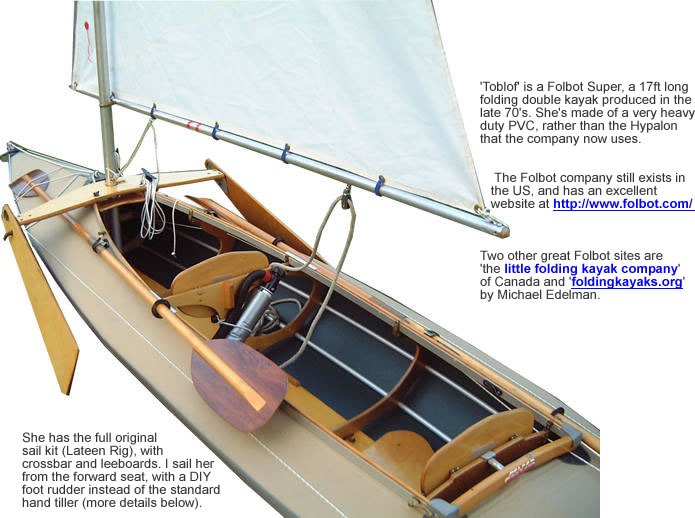
Toblof
without the skin, some of my DIY mods are more clearly seen.

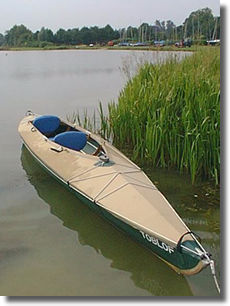 |
on
the lake at With the 3' beam and the 17' length, she's much more stable than most kayaks. |
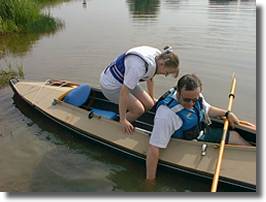 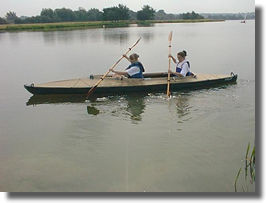 |
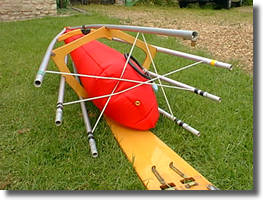 |
Bungee cord threaded around and through the frame end assemblies to hold them into the end frames when inserting them into the skin. I fitted a brass bolt under the front edge of each seat to stop them moving around. |
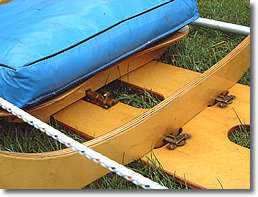 |
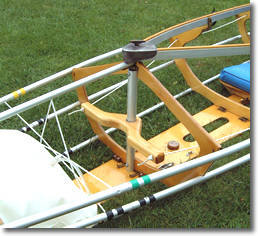 |
I added a foot operated tiller to the standard Folbot rudder so that I could use it for paddling as well as sailing. The same idea as the GII, it has a vertical alluminium tube fixed to frame 2 as the pivot. The cord is threaded through holes in frames 3-6 to Shin's rudder design (from the Folbot web board.) |  |
 |
The extra extension to the pivot pin for the lifting cord was needed as the angle is fairly acute, as can be seen here.
The tube is permanently fixed (to add strength and stiffness to the fore end of the cockpit), and yet the frames still nest neatly for storage.
|
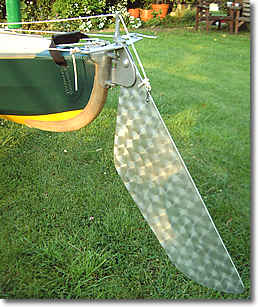 |
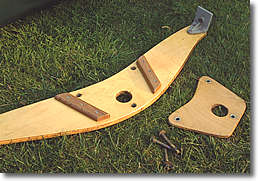 |
Another great idea from the Folbot web board, I added teak strips to the underneath of the mast step. It is now very firm, even without having to tighten the wing-nuts very much. I also added a brass bolt to the top, to stop the mast from twisting. |
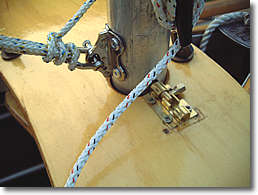 |
|
|
My 'curtain ring' sail fittings kept unclipping, so I now use double sided velcro strips, to save lacing the sail on each time.
I always fit 'telltales' to my sails, (in the vain hope it'll help me learn to read the wind better!)
Following
the advice of the user group, I store her assembled, upside-down, on a
DIY rack made from 'Unistrut' racking, and mounted on castors. (anyone know where I can get a folding car ? !!) |
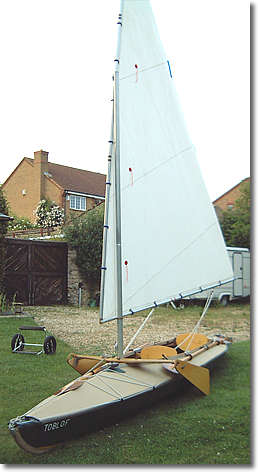 |
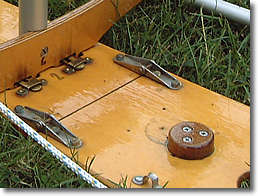 |
The original mast socket was a board with a hole in it, which fouled the brass catches when the bottom boards were folded, so I reversed the idea by making it into a teak plug that fits into the mast tube. The original owner (or Folbot ?) had colour coded the longerons with tape to ease assembly. |
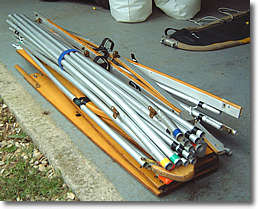 |
|
At last ! A test sail at Haversham Sailing Club, Milton Keynes. |
||
|
(The lawn didn't heel much either !!) |
I've now converted the lateen rig to a standing lugsail. I know they're less efficient, but the lateen's spars were too unwieldy for casual cruising and was virtually impossible to reef. The left hand photo shows the shortened gaff and the boom fitted with a gooseneck, but before the sail was trimmed and re-hemmed. The top right picture shows the reinforcement around the new tack before it was sewn. It was only neccessary to remove about 3 sq ft from the leading edge, so the form of the sail was not affected. A heavy grade plastic rowlock made an ideal gooseneck (a 'click' fit around the mast), (picture was taken before the sail was trimmed). At the other end of the boom, a stainless steel bolt was threaded into the wooden end stop with a swivelling block for the mainsheet. The result ? the spars can be raised and lowered (and stored) whilst afloat, and the sail can be quickly reefed to up to 1/3 of it's size by just wrapping it around the boom. |
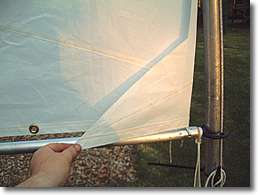 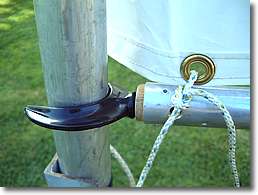 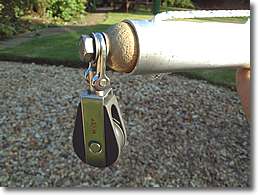 |
|
||||||||